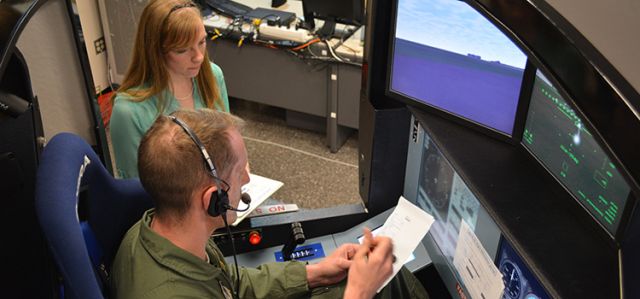Document Type
Conference Paper
Publication Date
9-1998
Publication Source
21st International Council of the Aeronautical Sciences Congress
Abstract
High Altitude Long Endurance (HALE) Unmanned Aerial Vehicles (UAV's) are increasingly being considered to perform a wide range of tasks. Recent years have seen greater value of UAV's in the military reconnaissance arena, first in the Persian Gulf war, with the use of small UAV's, and more recently over Bosnia with medium sized UAV's.
The NASA ERAST program uses HALE UAV's for environmental sensing and monitoring. The military has investigated using HALE UAV's for Theater Ballistic Missile defense, as well as general battlefield reconnaissance. Proposals have been made to use HALE UAV's for communications relay, long term surveillance (with a degree of flexibility not available from satellites). border surveillance. powerline monitoring, forest fire detection. and many others.
By removing the pilot, UAV's reduce risk, not only to the potential pilot, but also to politically sensitive situations. Removal of the pilot provides an overall simplification of the aircraft (with possible exception to actuators and flight control systems). It also provides for a greater variability of possible configurations by removing the need for a pilot to see out and sit up, removal of complex environmental controls, the need to accommodate other activities necessary for human subsistence, etc.
The justification for using Low Speed HALE UAV's is that the low speed regime can be better for environmental sampling, and they are less likely to disturb the composition of the air around them. Lower speed implies the regime in which reciprocating internal combustion engines are used. although it does not exclude the use of electric motors. These motors typically have lower first cost and lower fuel consumptiona. Despite having lower reliability, they still have lower maintenance costs than turboprops or turbofans.
High altitude flight is desirable for providing a wider field of view for environmental sensing and military reconnaissance. It is also the lower end of the regime of interest for Ozone layer composition/chemistry tests. The air is more stable which supplies a more stable sensor platform, it is also the altitude of lower windspeed, and it is above commercial airways (for the time being).
Long endurance is desired so that full solar day sensing can be carried out. When used in the disaster relief or Cellular Telephone relay role, the airplane is required to be on station for a maximum number of hours. In addition, in the military reconnaissance role it is desirable to watch developing problem areas for a long period of time. Of course in the anti-ballistic missile role, it would be advantageous to stay on station awaiting the launch of enemy missiles for as long as possible.
Having introduced a range of possible missions for a Low Speed HALE UAV, it is possible to make intelligent assumptions regarding some of the more basic performance parameters thereby enabling the preliminary sizing of the aircraft to begin.
Inclusive pages
1-10
ISBN/ISSN
978-1-56347-287-9
Document Version
Published Version
Copyright
Copyright © 1998, International Council of the Aeronautical Sciences (ICAS) and the American Institute of Aeronautics and Astronautics (AIAA)
Publisher
International Council of the Aeronautical Sciences
Place of Publication
Melbourne, Australia
eCommons Citation
Altman, Aaron, "Design Methodology for Low Speed High Altitude Long Endurance Unmanned Aerial Vehicles" (1998). Mechanical and Aerospace Engineering Faculty Publications. 133.
https://ecommons.udayton.edu/mee_fac_pub/133




Comments
This document is provided for download by permission of the publisher. Permission documentation is on file.